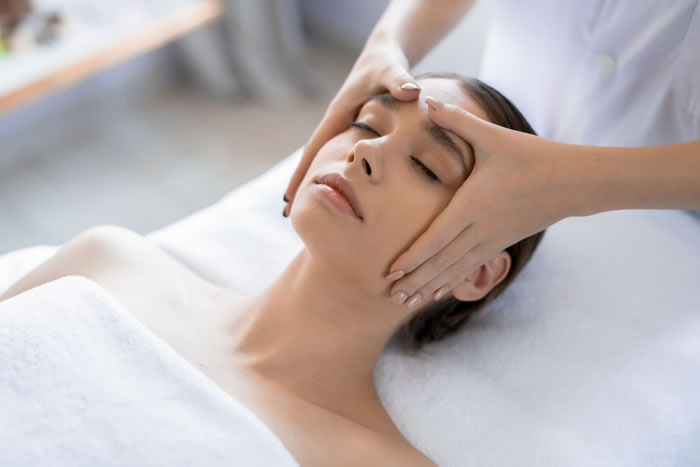Temporomandibular Joint Syndrome (TMJ), a disorder impacting the jaw joint, can cause discomfort ranging from mild jaw stiffness to debilitating pain, affecting chewing, speaking, and even facial expression. If you’re battling TMJ, you may feel the options are limited to medications or invasive procedures. However, there’s another therapeutic route to explore – facial massage. Let’s delve into how facial massages can help relieve TMJ symptoms.
Understanding TMJ
The temporomandibular joint acts as a sliding hinge connecting your jawbone to your skull. Dysfunction in this joint, often caused by injury, stress, or grinding teeth, results in Temporomandibular Joint Syndrome. Symptoms may include jaw pain, difficulty opening or closing the mouth, clicking or popping sounds in the jaw, and headaches.
The Power of Touch: Facial Massage
Facial massage can be a potent, non-invasive tool to alleviate TMJ discomfort. Here’s why:
- Relieves Muscle Tension: TMJ often stems from muscle tension around the jaw, neck, and face. A targeted facial massage helps relax these tight muscles, easing pain and increasing mobility.
- Enhances Blood Flow: Massage stimulates blood circulation, enhancing oxygen and nutrient delivery to the stressed muscles and promoting healing.
- Reduces Stress: TMJ can be exacerbated by stress, which often leads to teeth grinding or clenching. Massage activates the body’s relaxation response, reducing stress hormone levels and promoting a sense of calm.
- Promotes Mindfulness: Regular massage makes you more aware of your body, which can help you notice and correct harmful habits, like jaw clenching, before they contribute to TMJ pain.
Facial Massage Techniques for TMJ
You can perform these simple massage techniques at home, using clean hands or a facial roller:
- Jawline Massage: Place your fingers on either side of your jawline. Move your fingers in small, circular motions, gradually working your way from the chin towards the ear. Repeat this motion several times.
- Temporal Massage: Place your fingers on your temples. Apply gentle pressure and move your fingers in a circular motion. This technique helps relieve tension headaches associated with TMJ.
- Neck Stretch: With your hand, gently stretch the neck away from the shoulder, tilting your head from side to side. This can help relax the neck muscles and alleviate referred TMJ pain.
- Chin Resistance: Place your hand under your chin and gently push upwards while trying to open your mouth, providing gentle resistance. This exercise can strengthen the jaw and help with TMJ pain.
Professional Help
While self-massage can help, a professional massage therapist trained in TMJ relief techniques can provide more in-depth treatment. These therapists understand the intricacies of facial muscles and can tailor the massage to your specific needs. Some dental professionals also incorporate facial massage into their treatment plans for Temporomandibular Joint Syndrome.
Additional Remedies
Facial massage is just one method to relieve TMJ symptoms. Other strategies include heat/cold application, over-the-counter pain relievers, mouth guards to prevent teeth grinding, and exercises to strengthen jaw muscles. If TMJ symptoms persist, consult a healthcare professional.
Facial Massage and Temporomandibular Joint Syndrome
Facial massage provides a holistic, non-invasive, and therapeutic approach to managing Temporomandibular Joint Syndrome. While it may not replace medical treatments, it can complement them, offering significant relief from TMJ symptoms. As with any self-care strategy, consistency is key – the more regularly you practice facial massage, the more you’ll reap its benefits. Remember, the goal is not just to relieve pain, but also to empower yourself with tools for proactive healing.



